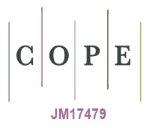Theoretical Approaches Parallel Identical Machines with Multi-Objective Functions
DOI:
https://doi.org/10.23851/mjs.v33i3.1149Keywords:
multi-objective functions ,identical parallel machines , completion time, tardiness, earliness, dominance rulesAbstract
In this study, we propose multi-objective functions which consist of the sum of completion time, tardiness time and earliness time where Ci denoted the completion time of job (i), Ti=max{Ci-di,0}, denotes the tardiness of job (i), Ei=max{di-Ci,0} be denoted the earliness of job (i).This problem is defined by // In this paper, we will present some theoretical analysis discussion, and prove when we have a problem with scheduling n jobs on two identical parallel machines (IPMSP).
Downloads
References
Garey, M. R., & Johnson, D. S. (1979). Computers and intractability (Vol. 174). San Francisco: freeman.
Alidaee, B., & Rosa, D. (1997). Scheduling parallel machines to minimize total weighted and unweighted tardiness. Computers & Operations Research, 24(8), 775-788.
[3] Azizoglu, M., & Kirca, O. (1998). Tardiness minimization on parallel machines. International Journal of Production Economics, 55(2), 163-168.
Yalaoui, F., & Chu, C. (2002). Parallel machine scheduling to minimize total tardiness. International journal of production economics, 76(3), 265-279.
Mokotoff, E. (2004). An exact algorithm for the identical parallel machine scheduling problem. European Journal of Operational Research, 152(3), 758-769.
Shim, S. O., & Kim, Y. D. (2007). Scheduling on parallel identical machines to minimize total tardiness. European Journal of Operational Research, 177(1), 135-146.
Nessah, R., Yalaoui, F., & Chu, C. (2008). A branch-and-bound algorithm to minimize total weighted completion time on identical parallel machines with job release dates. Computers & Operations Research, 35(4), 1176-1190.
Tanaka, S., & Araki, M. (2008). A branch-and-bound algorithm with Lagrangian relaxation to minimize total tardiness on identical parallel machines. International Journal of Production Economics, 113(1), 446-458.
Chiang, T. C., Cheng, H. C., & Fu, L. C. (2010). A memetic algorithm for minimizing total weighted tardiness on parallel batch machines with incompatible job families and dynamic job arrival. Computers & Operations Research, 37(12), 2257-2269.
Selvi. V (2014), Multi Objective Optimization Problems on Identical Parallel Machine Scheduling Using Genetic Algorithms, International Journal on Recent Researches in Science, Engineering & Technology, 2 (7) 112 - 122.
Wang, J. Q., & Leung, J. Y. T. (2014). Scheduling jobs with equal-processing-time on parallel machines with non-identical capacities to minimize makespan. International Journal of Production Economics, 156, 325-331.
German, Y., Badi, I., Bakir, A., & Shetwan, A. (2016). Scheduling to Minimize Makespan on Identical Parallel Machines. International Journal of Scientific & Engineering Research, 7(3), 353-359.
Chachan, H. A., & Hameed, A. S. (2019). Exact Methods for Solving Multi-Objective Problem on Single Machine Scheduling. Iraqi Journal of Science, 60(8), 1802-1813.
Kramer, A., Dell'Amico, M., Feillet, D., & Iori, M. (2020). Scheduling jobs with release dates on identical parallel machines by minimizing the total weighted completion time. Computers & Operations Research, 123, 105018.
Downloads
Key Dates
Published
Issue
Section
License
Copyright (c) 2022 Al-Mustansiriyah Journal of Science

This work is licensed under a Creative Commons Attribution-NonCommercial 4.0 International License.
(Starting May 5, 2024) Authors retain copyright and grant the journal right of first publication with the work simultaneously licensed under a Creative Commons Attribution (CC-BY) 4.0 License that allows others to share the work with an acknowledgement of the work’s authorship and initial publication in this journal.






















